Includes per person per night:
- 2 course menu (chef's choice)
- Overnight accommodation
- Buffet breakfast
4.49504948377904 of 5 Stars

Includes per person per night:
Click the "See calendar and prices" button to choose dates and see the room selection.
See calendar and prices: Halfboard stay ( 2 courses)Vestergade 2, 6230 Rødekro
Show map

Arrival 30.06.-24.08.
Includes per person per stay:

3 days / 2 nights - arrival 17.03.-13.04. and 18.08.-26.10.
Includes per person per stay:
Day 1:
Day 2:
Day 3:

4 days / 3 nights
Includes per person per stay:

3 days / 2 nights
Includes per person per stay:

2 days / 1 night
Includes per person:

Includes per person per night:

2 Days / 1 Night
Includes per person per stay:
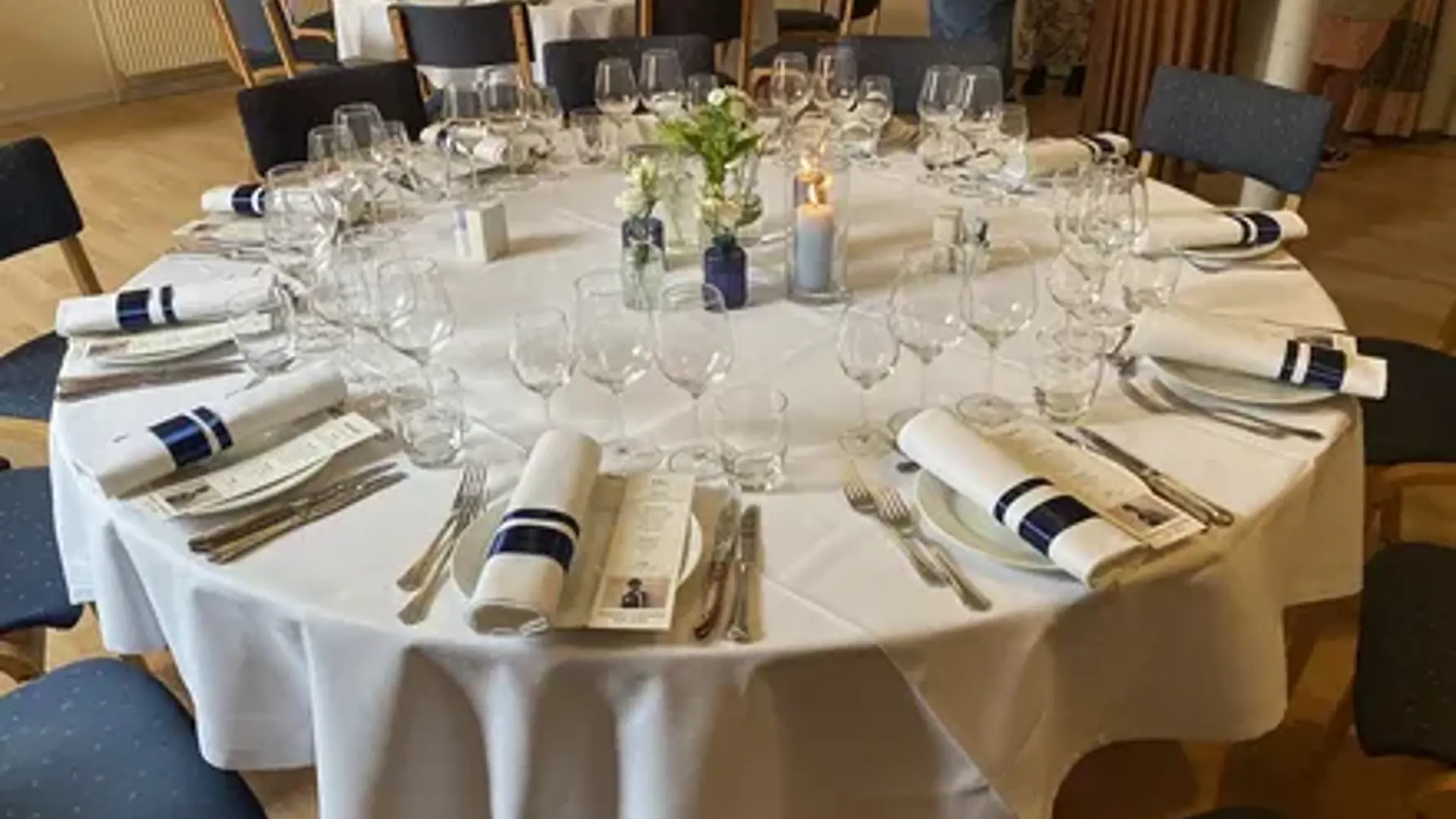
Arrival Sundays only
Includes per person:
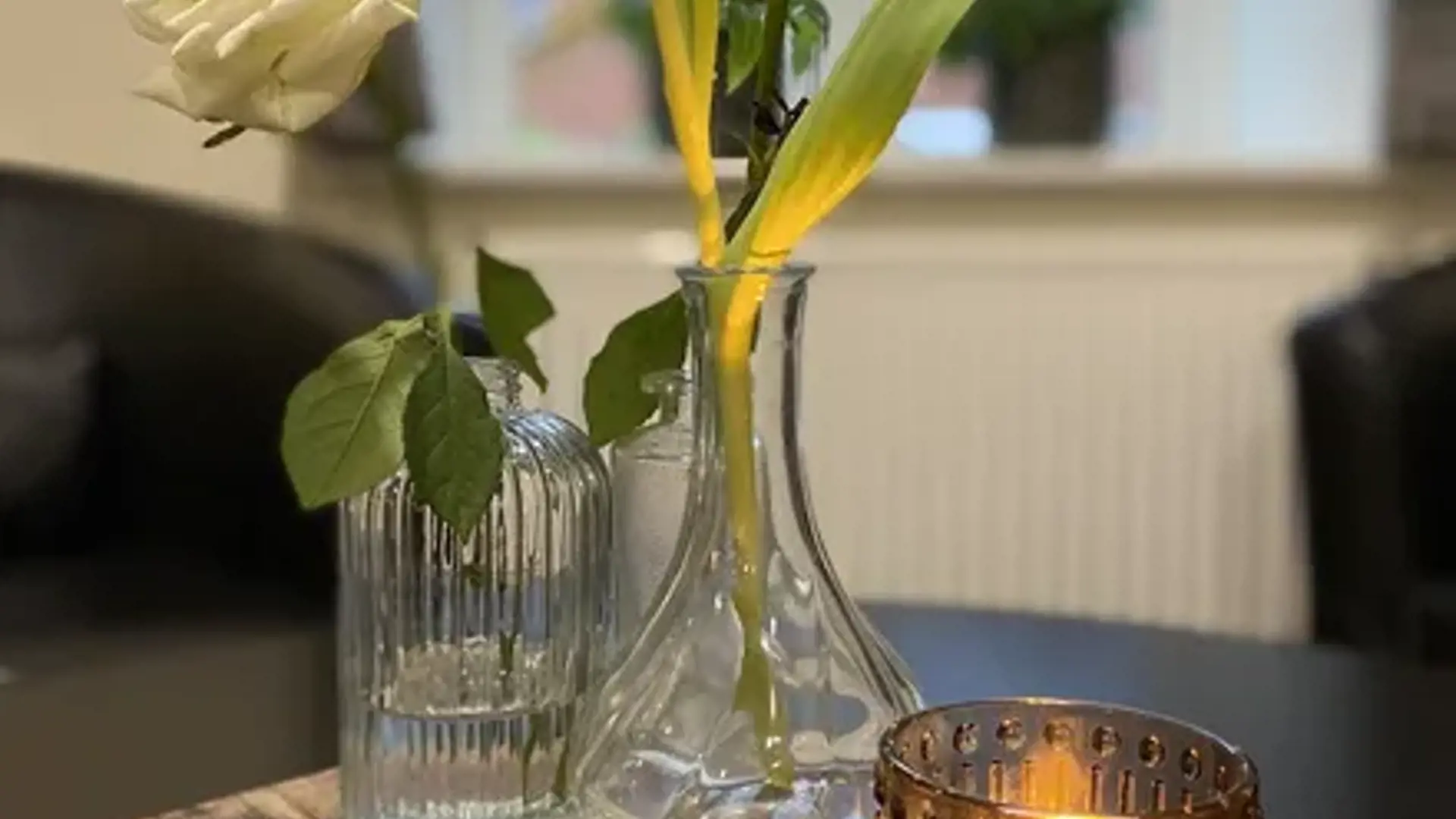
Minimum 3 days / 2 nights
Includes per person per night:
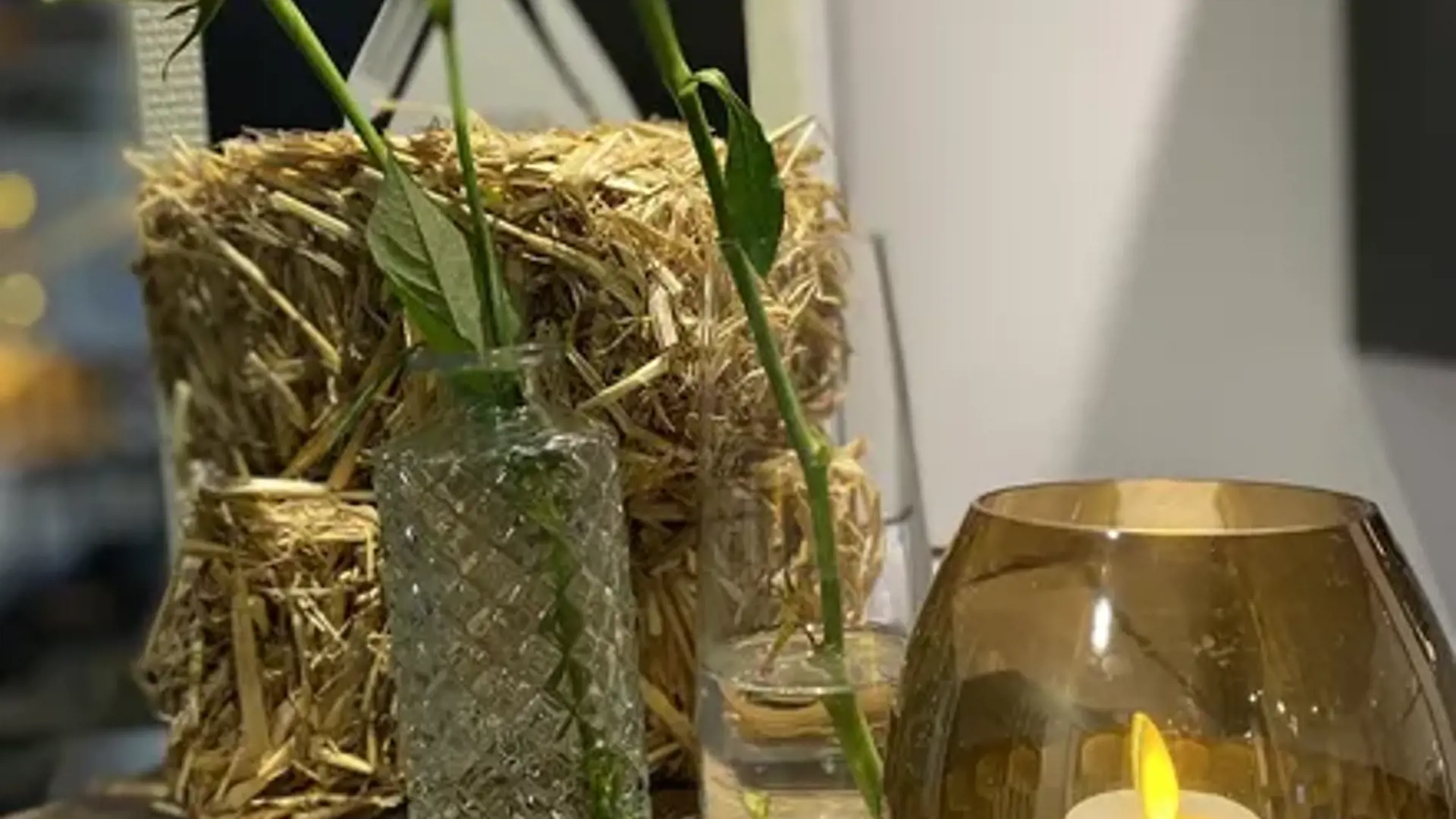
Minimum 3 days / 2 nights
Includes per person per night:
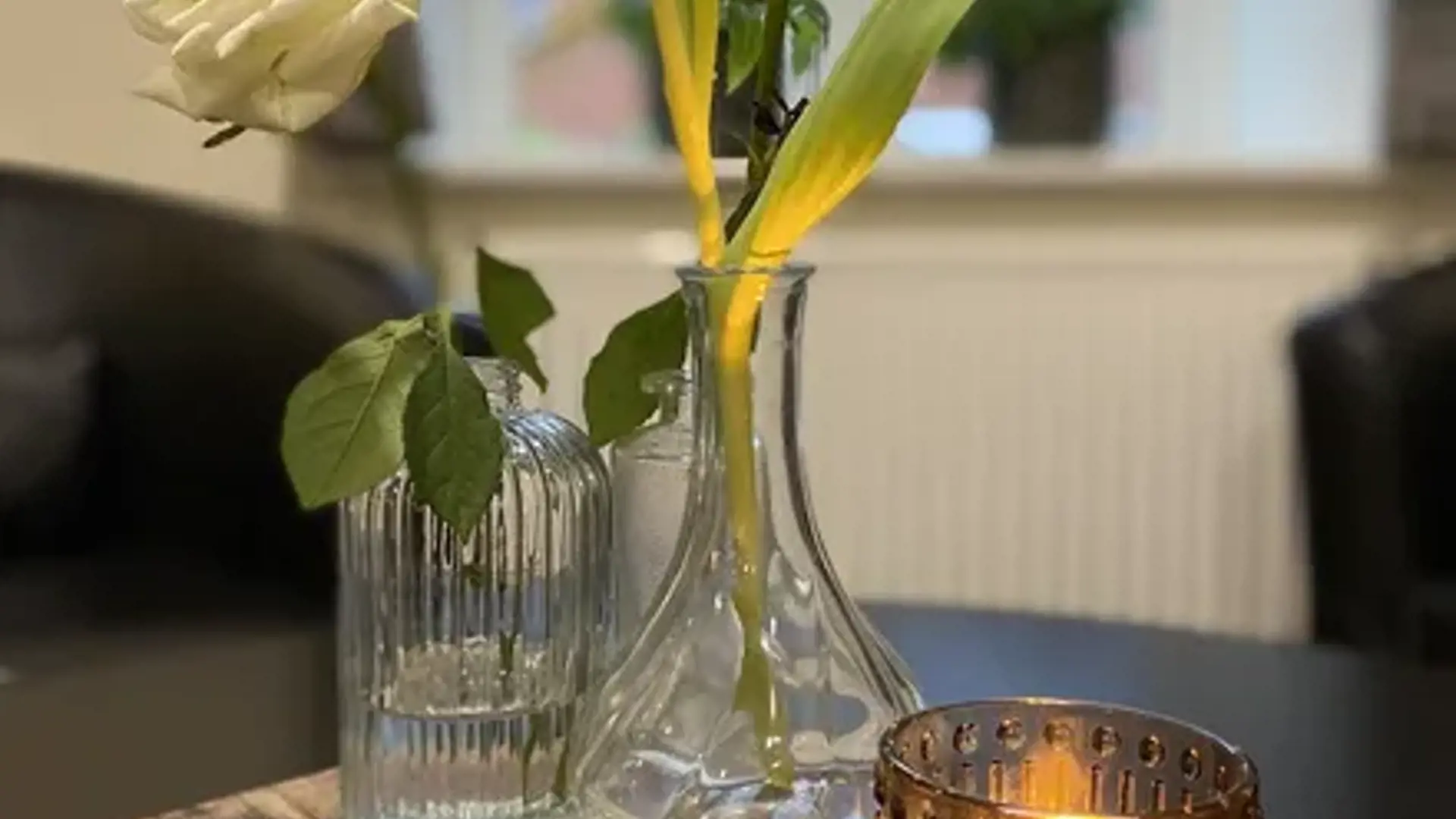
Includes per person per night:

1.43 km
Rise Church is a parish church located in the northeastern end of the village of Rise near Rødekro.
The church consists of a Romanesque choir and nave, both made of granite. In the choir, three of the original four windows still remain. Until the major fire in 1893, the original priest's door was also present. The three additions to the church were all built in the late Middle Ages, also using granite and monk stones. To the south, there is the church's chapel, covered by a vaulted ceiling.
The original spire of the church burnt down, leading to the decision to replace the vault of the tower with a flat wooden ceiling. The tower was subsequently rebuilt using recycled materials from another burnt-down church.
The interior walls of the church are whitewashed, and the ceilings are painted in gray boards. There are no frescoes. The church's furnishings are heavily influenced by the devastating fire of 1893, where the altarpiece, baptismal font, and pulpit survived. A crucifix and a canopy over the baptismal font also survived but were destroyed in a fire at the rectory in 1898. The oldest piece of furniture is the ancient baptismal font from the Romanesque period, adorned with carved leaves, among other things.
The altar table and altarpiece were carved by a carpenter from Flensburg in 1894. The altarpiece features paintings depicting scenes from the Old Testament. The pulpit and its canopy, also from 1894, are carved from pine.
There are gravestones dating back to 1831 and a stone from 1848 commemorating a hussar who fell in the First Schleswig War (1848-1851).
There is also a monument to the fallen of the parish in World War I (1914-1918).
The church's organ was built in 1894 by Marcussen & Søn in Aabenraa. It was expanded to a total of 22 stops from the original 12.

2.29 km
Please check the Museums website for opening hours, just in case.

3.12 km
The Andholm battery is part of the former fortification Sikringsstilling Nord which stretched from east to west with a total of approx. 800 bunkers. Andholm is one of the few batteries that was not blown to pieces. The post was on private land and the owner wanted to preserve a memory of the time. Today you can therefore see the three bunkers almost intact.
In addition to the three bunkers, one can also see the hole where a railway brisk cannon should have been erected.
From the car park opposite Ribevej 25, there is a couple of hundred meters walk to the three bunkers.

4.81 km
In connection with a division into industrial plots, Haderslev Museum investigated the area here in 1980, because there were several plowed burial mounds. The largest mound was found to have been built in 4 stages, and had been used as a burial ground from the end of the Stone Age until well into the Bronze Age, with a different appearance for each burial.
The ancient burial site dates from the Bronze Age, where the oldest structure consists of a so-called Wheel Grave. It consists of a stone wreath with a diameter of approx. 10 m, from which 5 rows of stones are brought into the burial chamber in the middle. The wheel grave is the only known one of its kind in Denmark, and was moved 300 m south to its current location in a collaboration between Museum Sønderjylland and Aabenraa Municipality. This was done to make room for an industrial company.
When you cycle or walk on Hærvejen today, it is natural to take a break and visit the Hjulgraven in Hjordkær. It is very close to the route and is definitely worth a visit.
A burial mound is a burial ground built over a burial site of earth, peat and stone. It can contain several graves. Most commonly, there is a primary grave in the center of the mound, but there can also be several secondary graves further up the mound. How the burial mound looks in terms of size and design is often linked to the status of the deceased.

4.95 km
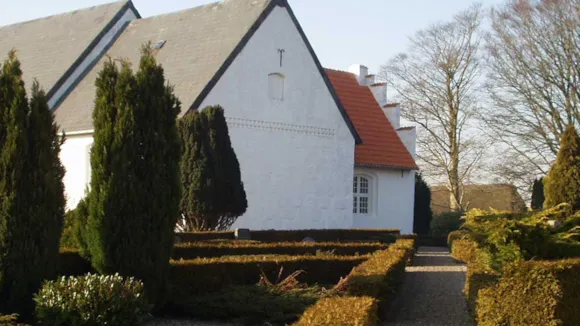
5.15 km
Romanesque chancel and nave.
Brick altar table with excellent Late Gothic cabinet, altarpiece from early 1500's.
Beautiful Renaissance pulpit from 1562.
Organ built 1980 by Bruhn and Son, Aarslev, Roedekro.

5.2 km
From the parking lot on Camma Larsen-Ledets Vej, or from Høje Kolstrup School, there is access to the forest. In the forest there are various loops you can walk, both major gravel roads and small nature trails.

5.39 km
Throughout the centuries, Jacob Michelsen's Farm House has preserved its authenticity and stands as a symbol of the city’s cultural heritage.
Jacob Michelsen's Farm House opens up for visitors at annual backing weekends, where bread and cakes are baked in the old stone oven on the farm. Here, you can have a chat with the baker and enjoy a cup of coffee with homemade bread or cake, either in the cozy rooms or in the garden.
It is also possible for groups to visit the farm by appointment.
In 1958, one of the family’s daughters opened the doors to the public, allowing them to visit the living room and kitchen of the house. This marked the beginning of the small local museum. At the museum, you can experience how people lived on the farm in the old days.
The house is furnished with original interior, and you can see original collections of tools from the kitchen, stable, fields, and forest. There is also a larger textile collection.
The baking house, used when baking weekends are held, holds cultural-historical value as its location testifies to the development in Sønderjylland in the 1870s and 1880s. During this time, the Prussian fire authorities prohibited having ovens in thatched houses, leading to the necessity of building independent bakehouses.

5.83 km
H.P. Hanssen is known for raising the issue of Nordschleswigs embedding into Denmark in the German Reichstag in October 1918. Furthermore, he became the chief architect of the Reunification in 1920.

5.93 km

6.28 km
Set sail at Cultural History Aabenraa. The museum reflects the proud maritime tradition that characterized Aabenraa in the age of sail, which later became an important element of the city's identity. Here you can experience one of the largest Danish collections of ship portraits, which used to hang in captains' homes.
Opening hours:
The museum reopens for the season on March 28, 2025.
Only from Thursday until Sunday.

23.21 km
The very first palace in Graasten was a hunting and leisure palace built in the midst of the 16th century. After it burned down in 1603, a new palace was built, probably where the current palace´s south wing is now.
Shortly before 1700 the Chancellor Frederik Ahlefeldt built an impressive Baroque palace, which itself unfortunately burned down in 1757, only leaving the palace church. The current Graasten Palace, or rather the south wing, thus originates from 1759. In 1842 the main building was added.
In 1935 the right of use of the palace was given to the late King Frederik IX and Queen Ingrid. Queen Ingrid was very interested in flowers and stood for the planning of the garden at Graasten Palace until her death in 2000. The interest in flowers and the garden was continued by her daughter H.R.H. Queen Margrethe II.
There is no public access to the buildings and rooms of the palace and as Graasten Palace Church is being renovated, it is also closed to the public until spring 2027.
During the New Year's speech in 2023, HM Queen Margrethe II announced her abdication and on 14 January 2024, Denmark got a new king and queen in the form of King Frederik X and Queen Mary.
When the royal family is in residence at Graasten Palace, the area is closed to the public and there is no access to Graasten Palace Gardens and Church; The Palace Church will not be open for services and summer evening singing due to renovations.
This was the first year we were able to receive the new royal couple, who travelled on foot from the official reception on the square to Graasten Palace. After the royal couple's departure from Graasten Palace, H.M. Queen Margrethe II stayed in the summer residence.
Graasten Palace Gardens will be closed from the morning of Monday 30 June 2025 and will not open until the late afternoon of Friday 15 August 2025. The August date is subject to change.
Guard replacement
Once the palace is inhabited, a royal split flag goes to the top of the pole on the palace's bell tower and the Royal Life Guard sets up to guard. Every day there is a shift change of the Royal Life Guard. The guard starts from Det Gule Palæ, Ahlefeldtvej 5, where the new guard’s line up. Accompagniet by two tambours they march at 11.43 a.m. through Gråsten via Borggade, Torvet and Slotsgade to the palace, where the shift will take place at the guard house at 12.00. When King Frederik the X is in recidence, the march on Fridays is accompanied by the Royal Life Guards Tambour Corps and the changing of the guard takes place in the palace courtyard.
Fridays concerts
Will be held in the palace courtyard in connection with the changing of the guard during the royal couple's stay at the palace.